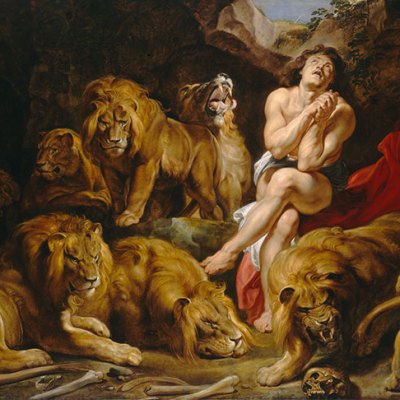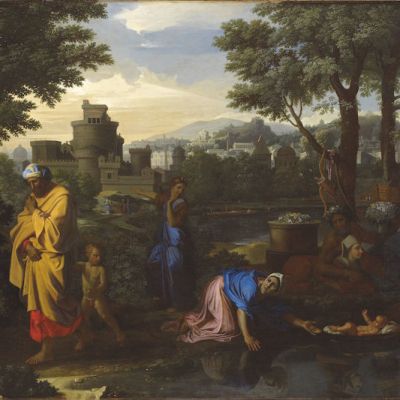In the late 16th and 17th centuries, Antwerp was a design studio for the world. The port city, in what was then the Habsburg Spanish Netherlands, suffered from the religious conflicts of the time, but weathered sack and damage from armies on both sides of the long wars of religion to reinvent itself as a centre of art, engraving and publication. It was also a hub of typography and printing, especially after the establishment of the mighty international firm of Officina Plantiniana in 1555. The city’s artists excelled in many spheres, but especially in the arts of drawing and design: Antwerp prints travelled throughout the Habsburg realms and beyond. Designs derived from them can be found in mission churches in the Andes, on tombstones in remote Scottish graveyards, on Chinese ceramics made under Jesuit auspices, and on metalwork and title pages throughout the early modern world.
Odysseus’s Ship Stocked with Provisions by King Alcinous (c. 1630–35), Jacques Jordaens. Museum Plantin-Moretus, Antwerp
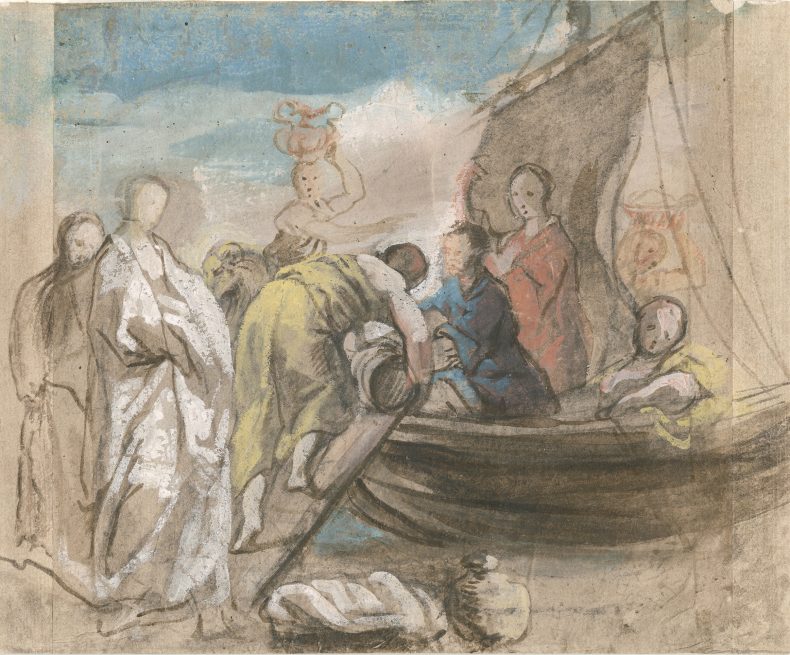
‘Bruegel to Rubens: Great Flemish Drawings’ at the Ashmolean in Oxford offers a glimpse of the multiple possibilities and uses of drawing in Flanders, and takes a broad view of what might be defined as a drawing. Preparatory studies for grand paintings are represented here, as in Rubens’ casually massive charcoal study of a nude male torso, which reappears in his Raising of the Cross (1610–11) in Antwerp Cathedral. There are delicate, sardonic pages from friendship albums; designs for tapestries, title pages, stained glass; jewel-coloured studies of tulips, roses and insects painted on vellum by Joris Hoefnagel; delicate watercolour landscapes, glimmering like enamel, that are finished works in themselves, such as The Fall of Icarus (1590) by Hans Bol.
Distant View of Antwerp (c. 1575–80), Hans Bol. Ashmolean Museum, University of Oxford
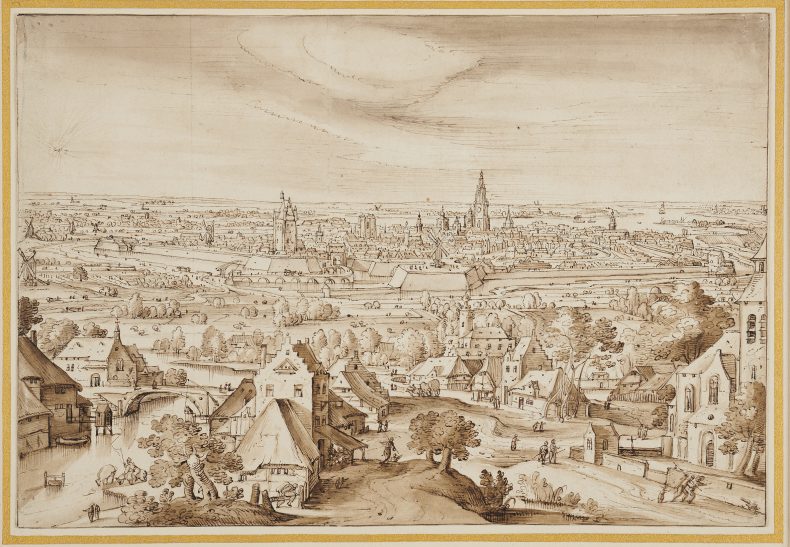
The sheer variety of drawings included is breathtaking. There is a tender head of a little girl in coloured chalk, drawn by Cornelis de Vos, perhaps a modest portrait made for the child’s parents. There is a roughly spirited group of women chatting and laughing in the street under the studio window, drawn rapidly in red chalk and brown ink by Jacques Jordaens ‘uit de venster gesien’ (‘seen from the window’) – a private record of a moment of life passing on 1 October 1659; and there is a wild scribble of a peasant dance, drawn in graphite at lightning speed, as if among the crowd of dancers, by David Teniers the Younger. There are two anonymous landscape drawings, both in black and white chalk, which could almost date from the Romantic 19th century: a ramshackle bridge over a dark river in mountainous country, and a fluent study of intense light falling on a path through a forest, drawn in broad, tactile strokes of black and white chalk. A curious, almost rococo chalk and wash drawing by Justus van Egmont lingers in the memory, haunting and strange: a procession of feathery ghost-gentry led by a monkey into a misty garden. A sparse drawing of an earthworm by an anonymous artist may yet become a cult object for aesthetes.
Study of a Young Girl Wearing a Cap (c. 1620–35), Cornelis de Vos. Phoebus Foundation, Antwerp
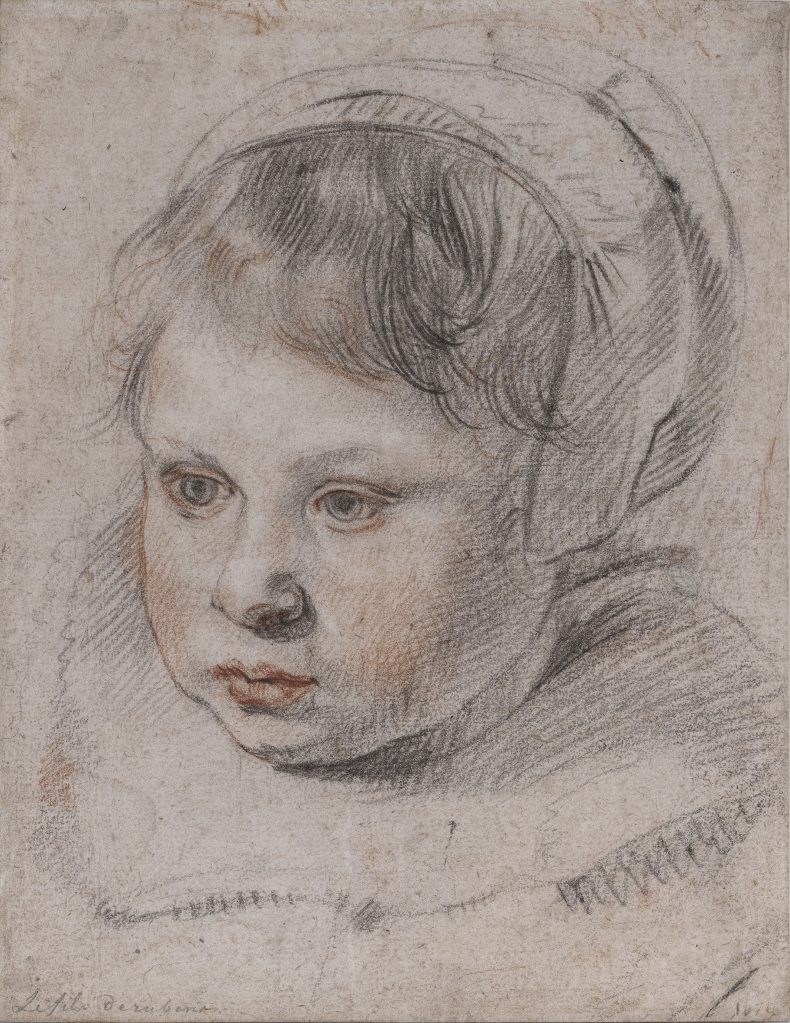
As well as a splendid selection of finished drawings – sometimes refinished and adapted, as with Rubens’ retouching of drawings by Cornelis Bos and a follower of Polidoro da Caravaggio – there are some magnificent preparatory works where the process of invention and revision is legible. Anthony van Dyck’s Carrying of the Cross (c. 1617–18), in brown ink and wash, is fully affective Jesuit baroque, with the light falling on the muscular backs of the gang of executioners in whose shadow Christ stumbles and falls. The handling of the mourning figures at the left of the composition is austere and immensely expressive. In contrast to this sparse accomplishment is the sense of struggle and continual revision and improvement in Abraham van Diepenbeeck’s Lamentation of Christ in the Presence of a Dominican Friar (1640–75). This complex palimpsest, overpainted and redrawn, with nine strips of paper glued on to the original sheet, eventually works its way to an intense meditation portrait, the friar kneeling in dawning ecstasy as the vision of the Lamentation assembles itself in red and shadowy grey before him under a stormily hatched and chalk-reddened sky.
Study of a Man with his Hands Crossed (c. 1618–20), Anthony van Dyck. Ashmolean Museum, University of Oxford
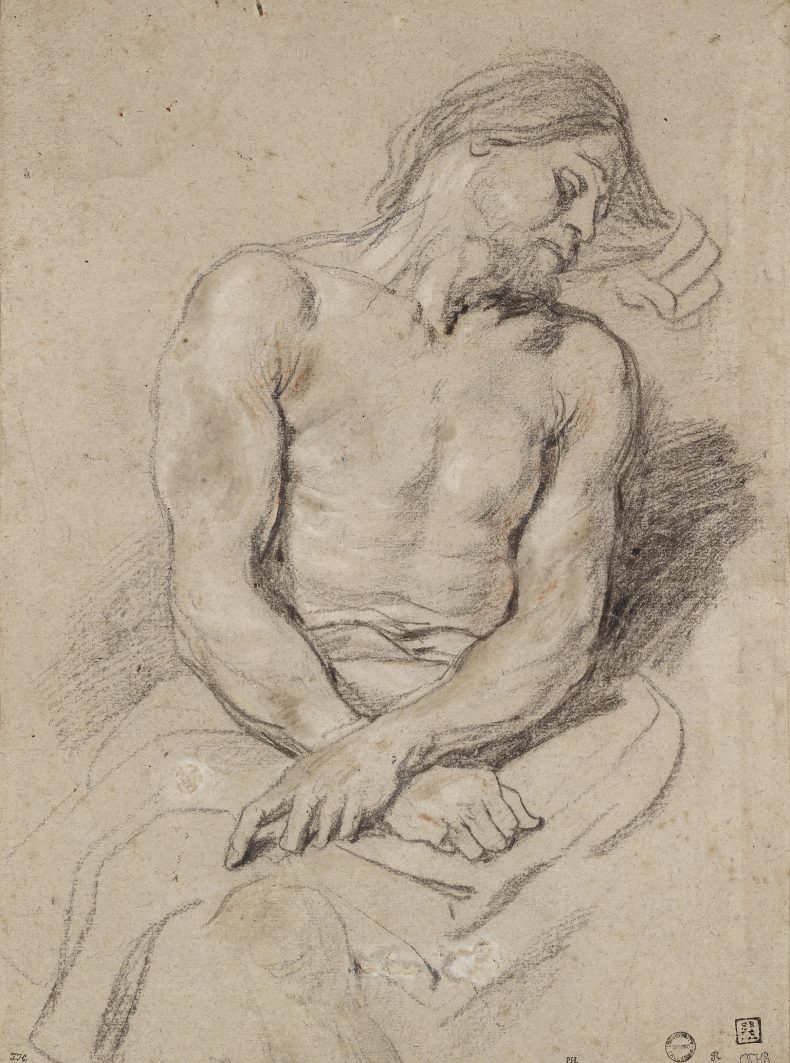
Rubens emerges as the hero of the epoch, a virtuosic figure on the public stage of Europe: the modelled drawing of the Belvedere Torso, the lifelike Henri IV drawn from a portrait bust after his death to prepare for the grand series of history paintings commemorating Marie de’ Medici, now in the Louvre. There seems to be no end to his range and his capacities, but mention must be made of the exceptional portrait drawing, in ink and wash over black and red chalk, of the collector (and discreet Catholic) the Earl of Arundel. This drawing inhabits a different realm from Rubens’ portrait of the Earl as armoured magnate in the National Portrait Gallery in London, or the sombre, rather grim public man in the National Gallery. Here is a portrait of a friend, a fellow collector, a co-religionist: scruffy, vital, sardonic, with just a touch of English melancholy, his hair and collar ruffled, in mid conversation, vividly present in the room.
Study of the Head of Henri IV (c. 1622), Peter Paul Rubens. Museum Plantin-Moretus, Antwerp
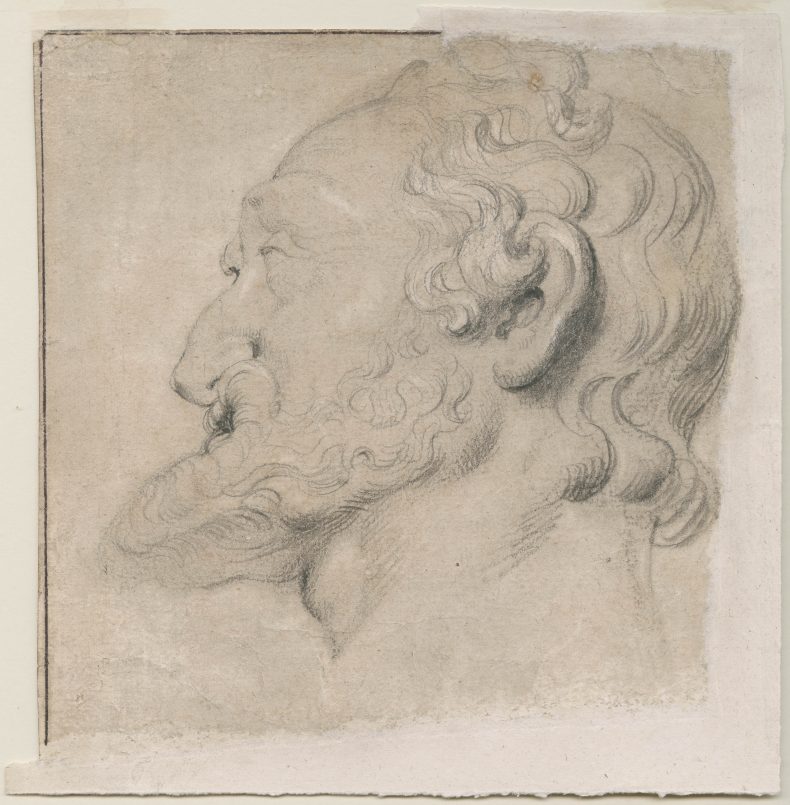
The layout of the exhibition is exemplary: generous spaces, rich wall colours, informative, unobtrusive interpretation. A few talismanic objects are adroitly placed: a massive cast of the Belvedere Torso accompanies Rubens’ drawing of the sculpture; two vitrines evoke his working and domestic environment, one of drawing equipment, the other an elegant cabinet of coins, medals, small sculptures and books against a gilt-leather background. Like this domestic constkamer, the whole exhibition is an epitome of the wealth of the visual culture of early modern Antwerp.
Hilly Landscape (c. 1615–18), Jan Brueghel I. Ashmolean Museum, University of Oxford
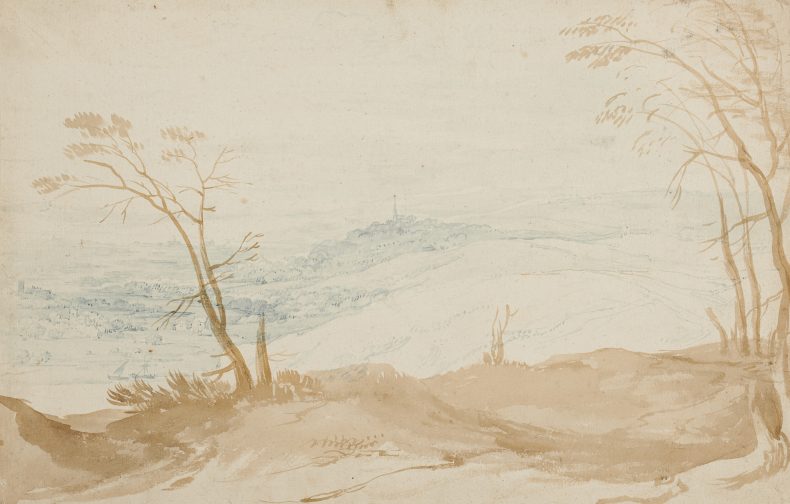
‘Breughel to Rubens: Great Flemish Drawings’ is at the Ashmolean Museum in Oxford until 23 June.

